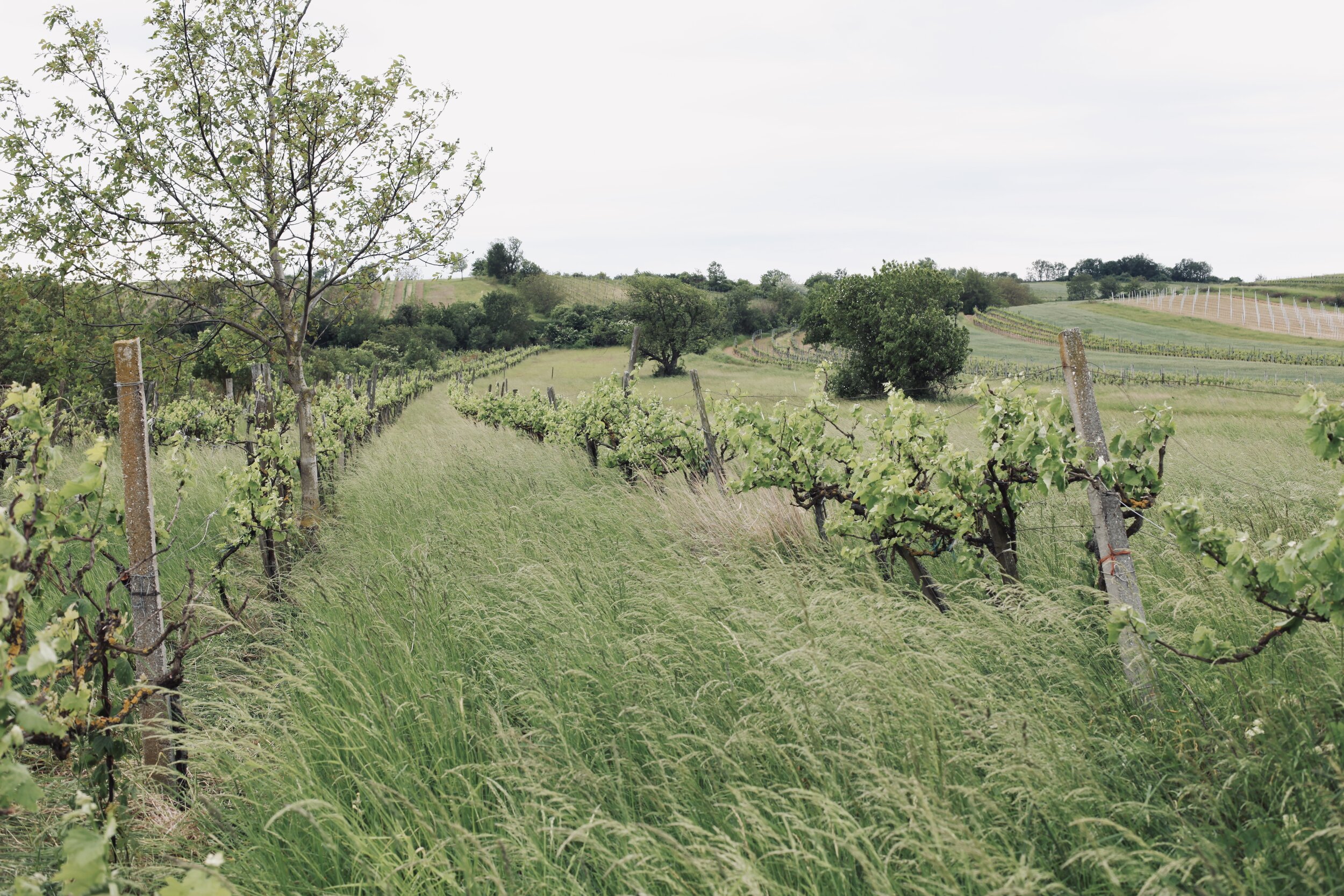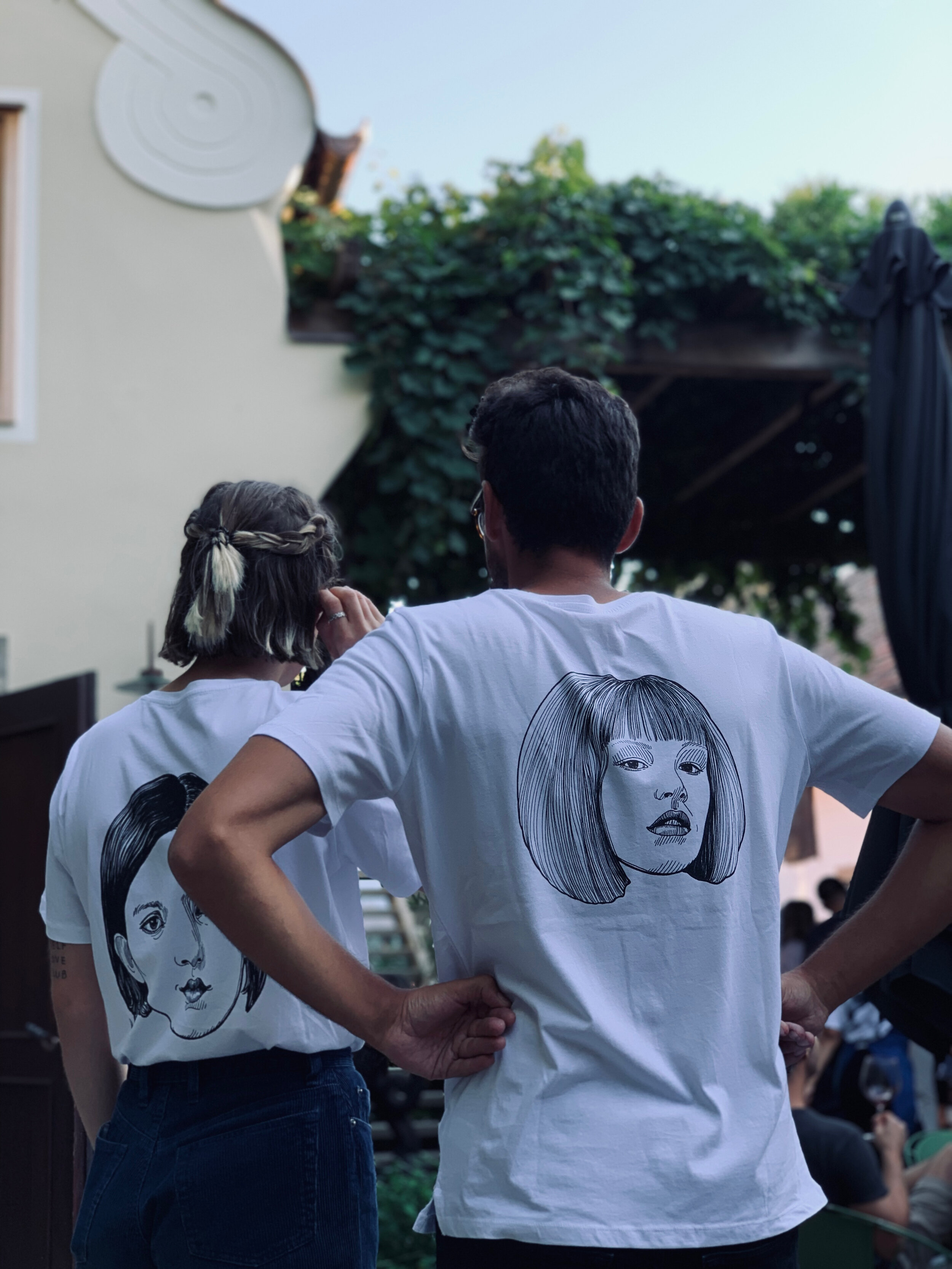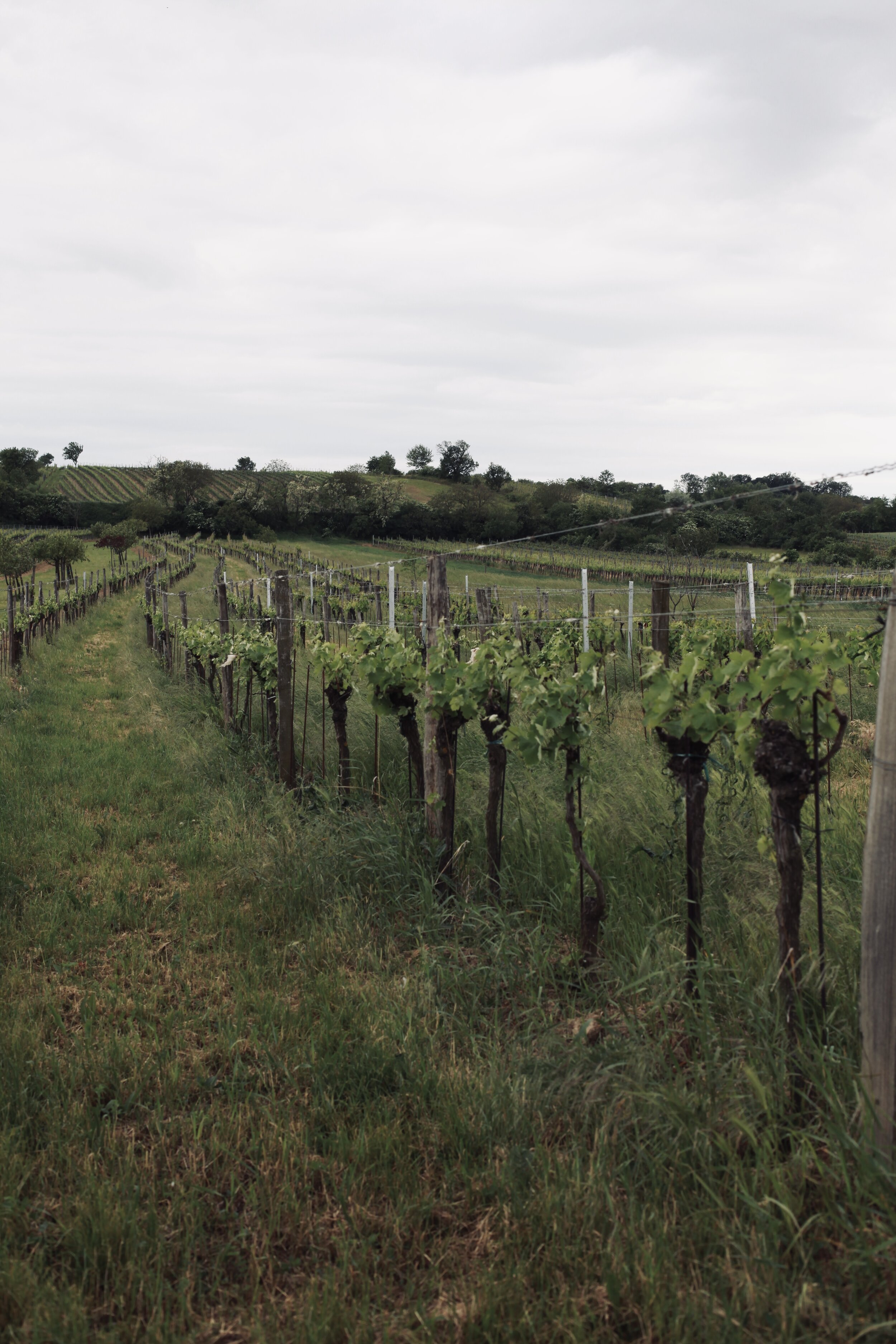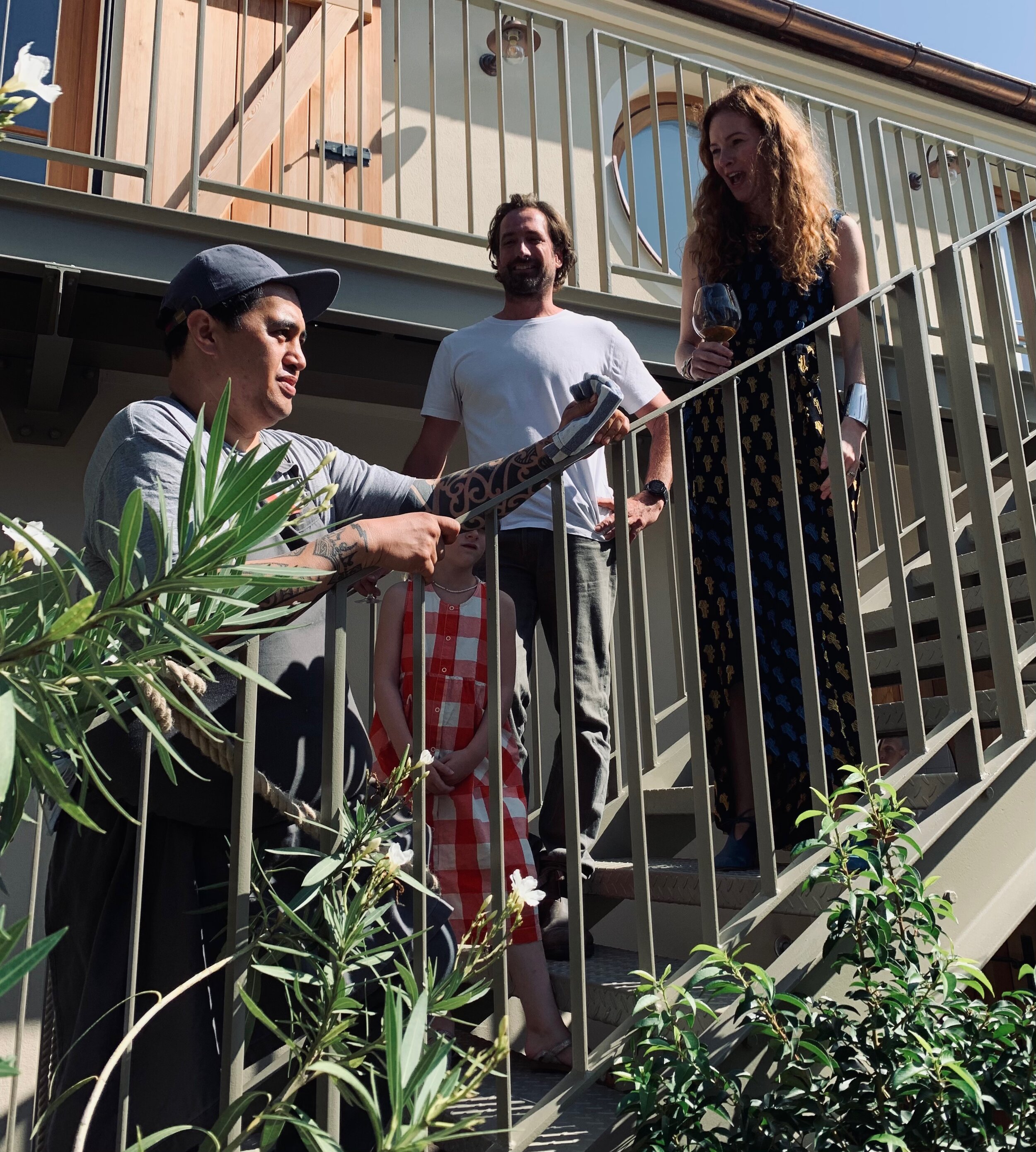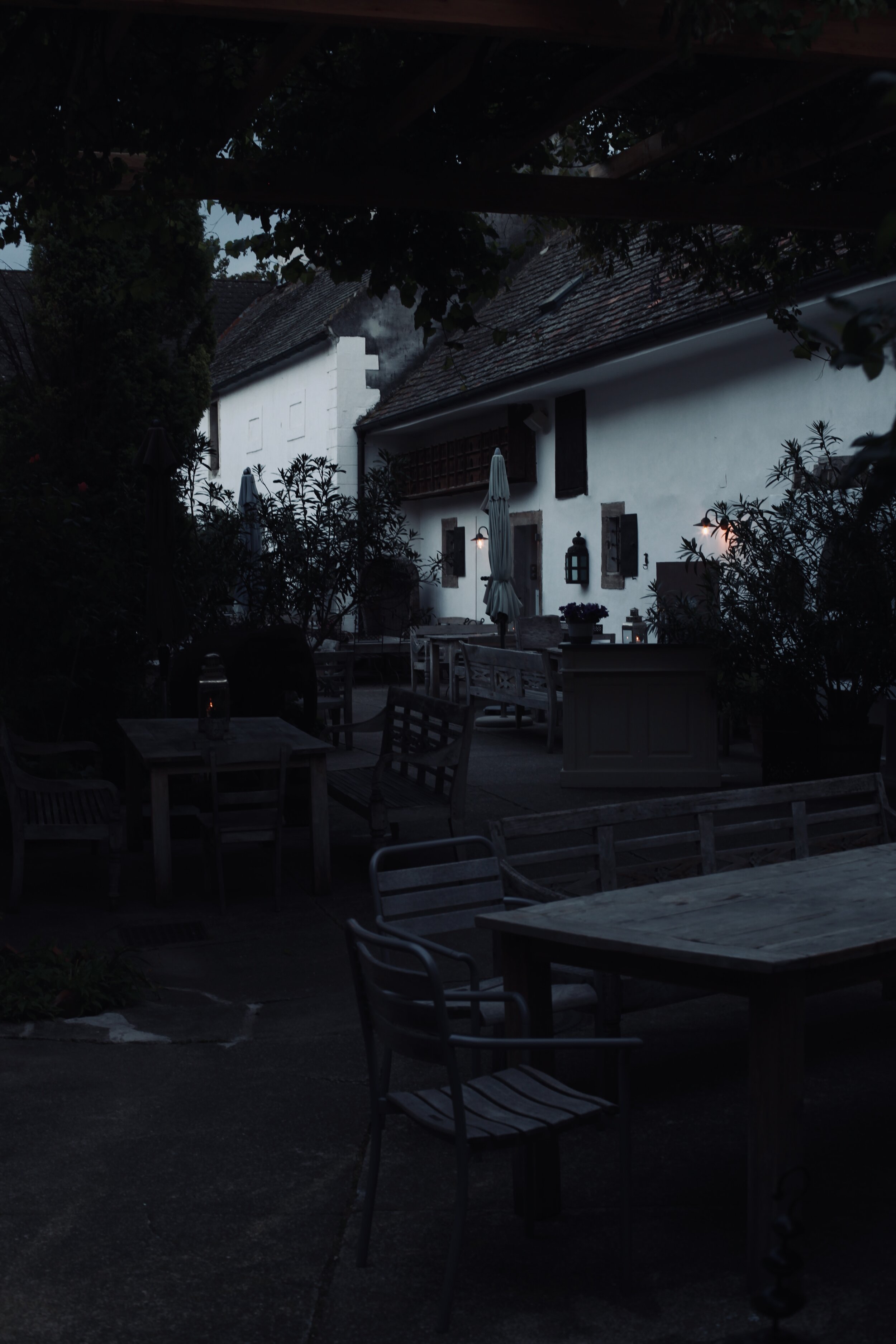GUT OGGAU
-
On the western side of the Neusiedlersee in Burgenland, you’ll find the quaint town of Oggau. As we drove in from the north, the rolling hills funnelling down towards the lake were dotted with perfectly angled vineyards, tucked amongst the forests and wildlands. We arrived at Gut Oggau’s heuriger, a traditional Austrian eatery that serves cold food and local wine. We were immediately surrounded by friendly faces, guzzling glass after glass with vigour and cheer.
-
Stephanie and Eduard Tscheppe, the proprietors, are beautiful people – they radiate. After some quick hugs, we jumped in their truck and headed out to the vineyards. Nestled into hillsides, we find dozens of tiny plots spanning tens of kilometres from North to South along the lake. Despite their seemingly large quantity of holdings, they only amount to 10ha, which further proves how unique and minuscule each terroir is to their wines. In particular, we fell in love with the wild vineyards – vineyards that had been abandoned a decade ago and were now completely overrun by trees and grasses and bushes and animals. Despite the horrifically low yields in these vineyards, they continue to harvest the fruit, believing it adds a certain energy to the wines.
-
Over a late lunch, we learned about how they fell in love, got married, and did the impossible: they purchased a derelict farmhouse and its vineyard holdings and started making minimal intervention wines to support their family. They admitted it wasn’t easy, and there were years in which they weren’t sure if it would pan out, but they persevered. Their strength of character, love for one another, and belief in the vineyards pushed them through. Now, ten years later, they make some of the most sought-after wines in the world.
MORE FROM AUSTRIA: MEINKLANG | KOPPITSCH | FRANZ WENINGER
2023 THEODORA
35-year-old Grüner Veltliner and Welschriesling vines are planted on gravel and limestone. Two-thirds of the grapes are destemmed and crushed into used 500L, 1000L, and 1500L barrels to ferment and mature for nine months without batonnage. One third of the grapes are fermented on skins for a short period of time. It is unfined, unfiltered, and has no added SO2.
2023 WINIFRED
35-year-old Blaufrankisch and Zweigelt vines are planted on gravel. The grapes are destemmed and pressed directly into neutral large format Austrian oak barrels. After fermentation the wine spends eight months on lees in neutral puncheon on lees with no batonnage. The final wine is bottled unfined, unfiltered, and without SO2.
2022 ATANASIUS
The grapes for this cuvée come from a low-yielding plot of 35-year-old Zweigelt and Blaufrankisch. The vines are planted on gravel and limestone. The grapes are destemmed and fermented in 500L and 1200L barrels. 2/3rds spent three weeks on the skins, and 1/3rd was direct pressed. Élevage is done in the same barrels for a year. The wine is bottled unfined, unfiltered and without SO2. This year’s edition has a moderate, uplifting sparkle to it.
2023 MASKERADE ROSÉ
2022 JOSEPHINE
Roesler is a crossing of Zweigelt and an unnamed variety that has extreme cold hardiness, resistance to mildew, and deeply coloured fruit. It is blended with Blaufrankisch for this cuvée. The vines are 35 years old and are planted in gravel. The grapes are destemmed and allowed to ferment in 500L, 1000L, and 1500L neutral oak barrels. Élevage is done in 500L barrels for 8+ months before the wine is bottled, unfined and unfiltered.
2022 JOSCHUARI
This wine is made from old Blaufrankisch vines planted on poor gravelly soils higher on the slope. Two-thirds of the grapes are destemmed and fermented in large neutral oak barrels. The final third is direct pressed into barrel, made like a rosé. Because of this wine’s concentration, it sees extended barrel ageing. As with the other wines, it is unfined and unfiltered.
2022 TIMOTHEUS
Grüner Veltliner and Weissburgunder are the two components of this cuvée. They come from 40- year-old vines planted on a complex combination of limestone, slate, gravel, and sand. A third of the grapes are destemmed and fermented on skins for three weeks while the rest are pressed whole cluster into old 500L barrels. The two wines are combined and spend an additional year in large neutral oak. The wine is bottled unfined and unfiltered.
2022 EMMERAM
40-year-old Gewürztraminer vines are the muse for this bottling. They are planted on limestone and sand and tend to yield less than two tons per hectare. 2/3rds of the grapes are destemmed and pressed directly into 500L neutral barrels to ferment. The final 1/3rd is fermented on skins for several weeks. The wine is bottled unfined and unfiltered.
2022 CECILIA
This brand new cuvée is a blend of red and white grapes from a 1.4ha limestone-rich plot plowed by horse. As with most of their wines, 2/3 of the grapes are direct pressed while 1/3 is fermented on skins. Fermentation and élevage take place in neutral 1500L barrels. It is bottled unfined, unfiltered, and without SO2. Stylistically it falls somewhere between orange and rosé. 12% ABV
2022 BERTHOLDI
This wine comes from their oldest Blaufrankisch vines, over sixty years old, planted on limestone and slate. The juice ferments on skins whole-cluster for several days before being pressed off in an ancient tree press, painstakingly restored in their old farmhouse. The wine then spends several years in barrel before racking and bottling without SO2, fining, or filtration.
2022 MECHTHILD
This wine comes from their oldest Grüner Veltliner vines, over sixty years old, planted on limestone and slate. The juice ferments on skins whole-cluster for two days before being pressed off in an ancient tree press, painstakingly restored in their old farmhouse. The wine then spends several years in barrel before racking and bottling without SO2, fining, or filtration.
2022 EDMUND
This 55-year-old vineyard is as wild as it gets. The vines are unpruned, and the limestone soils aren’t tilled at all. Essentially, they’ve left it to fend for itself and merely harvest the grapes. The variety is undisclosed, and information comes only in whispers and rumours, but according to one source, this white grape was fermented on skins for ten days. After an eighteen-month élevage, the wine is bottled unfined, unfiltered, and without SO2.
2022 THEODORA
35-year-old Grüner Veltliner and Welschriesling vines are planted on gravel and limestone. Two-thirds of the grapes are destemmed and crushed into used 500L, 1000L, and 1500L barrels to ferment and mature for nine months without batonnage. One third of the grapes are fermented on skins for a short period of time. It is unfined, unfiltered, and has no added SO2.
2022 WINIFRED
35-year-old Blaufrankisch and Zweigelt vines are planted on gravel. The grapes are destemmed and pressed directly into neutral large format Austrian oak barrels. After fermentation the wine spends eight months on lees in neutral puncheon on lees with no batonnage. The final wine is bottled unfined, unfiltered, and without SO2.















